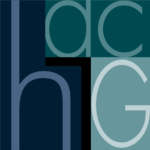Originally from Wellington, New Zealand, Katie Breckon is an artist, educator and remote community arts worker based in the West Kimberley outback. Living in the Kimberley since 2011, Breckon is influenced by her surroundings and by what is missing from the landscape – the absence of the familiar and how her two homes New Zealand and the Kimberley contrast each other. Inspired by historical sites and objects that communicate the deeper narratives of a place. Breckon finds the isolation of the outback is difficult at times but ultimately being in a place layered with meaning and feeling stimulates fresh creative ideas within her practice. This project was born from a feeling of homesickness. Living in the remote West Kimberley and returning home to New Zealand once a year means I move between two very different worlds, and neither really understands the other. I grew up in a valley in New Zealand where the sky was long and narrow, and although traveling extensively, it was not until living in the flat savannah surrounding Derby that the absence of hills and mountains became noticeable and overwhelming. For the first time, I realised the comfort those land formations created.
The Kimberley is saturated in sunlight for most of the year. At times the sun and heat feel unrelenting and I long for winter. I began to have a recurring daydream of standing under mountains in the deep south of New Zealand. It was a subconscious retreat to a place I know and belong.
Natural pigments became an interest of mine while working for Mowanjum Aboriginal Art & Culture Centre. Across the world, ochre has many uses including decorative, medicinal and ceremonial. Within the Kimberley, ochre is harvested and deeply symbolic, the colours are different to New Zealand Kokowai (ochre). Initially, I referenced ochre within my artwork as a way to compare my two homes and to visually translate a feeling of belonging and nostalgia for each place.
Permission to integrate and reference ochre in my artwork has been given by Ngarinyin and Worrorra elders and artists.
Lyle Branson was born in Melbourne in 1980 and is Perth based. Branson uses the process of dérive to discover and document areas around Perth looking at the intersection of natural and human forces within the urban and nature reserve areas. With the collection of photos taken from the long walks Branson returns to the studio to find a narrative and interpretation of the Perth Coastal Plain landscape that has been altered through the process of colonizing.
Branson studied Visual Arts at TAFE and Edith Cowan University. He has held solo exhibitions as part FotoFreo Fringe 2012 at Central Tafe ShowCase Gallery and in 2015 at Free Range Gallery. Branson was a finalist in Fremantle Art Centre Print Award 2015, Perth Centre for Photography CLIP Award 2016 and the City of Joondalup 2016 Community Invitation Art Award. In 2017 Branson took part in the Perth Centre for Photography Studio Residency Program.
Identification is a new body of work that Lyle Branson developed during his studio residency at Perth Centre for Photography in 2017. Branson takes a look at the native bush that is left in the urban areas around Perth while at some time feeling estranged within this landscape as it’s not part of his cultural heritage. As a way to explore Branson interact with the landscape of using different materials to artificially separate or highlight it from its own natural surroundings.
Daniel Gevaux is a photographer from Perth. Having resided centrally his whole life, he has gained an appreciation for the CBD as a junction of infinite possibilities, that has proven to be an artistic outlet for his practice. Immersed in the documentary tradition, Gevaux has formed a relationship with the street that allows him to subtly photograph everyday life, seldom being noticed. After completing two bachelor degrees and still not fulfilling the entry requirements for the Graduate Diploma of Education, he continues to work in a retail position in the City, providing him with the opportunity to take photographs at least 6 days a week. Perth City is one of change, one in which new was always proclaimed to be better than old. ‘Round Midday focuses on this city, where arguably the monuments of our victories and mistakes have been pulled down time and time again, part of a state looking for independence and freedom, still chained to the principles and guidance of others, both on the opposite side of the country and the world.
For interviews, further information and images available for reproduction, contact PCP.






